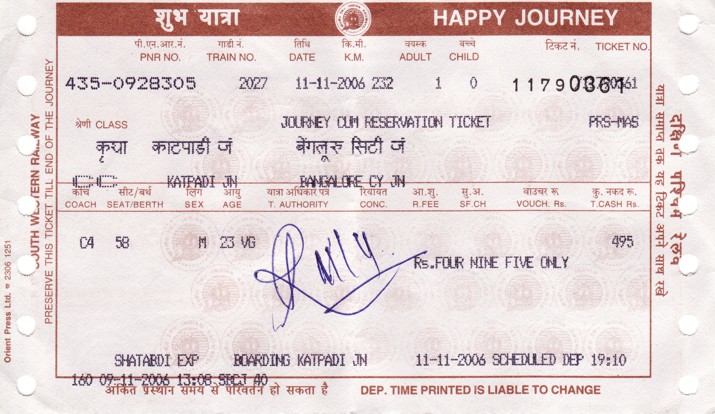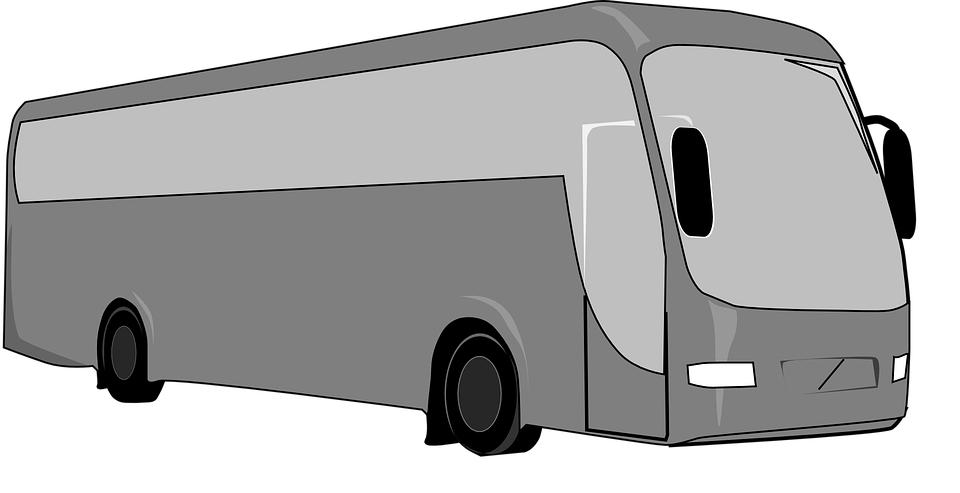For The Transit Fans: Company Profile: Indian Railways

One of the largest railway networks in the world, Indian Railways serves the entire country of India, moving 23 Million Passengers a day.

Indian Railways General Motors EMD WDP-4D on passenger duties
Type: Public, Owned by the Government of India. Privatization was explored but rejected.
Service: Passenger (Urban, Suburban, Short and Long Distance Trains), Freight
Fleet Size: Approximately 14,000 or more locomotives
Gauge: Indian Railways uses 4 different Gauges. Broad Gauge at 5ft 6in (1,676 mm), Meter Gauge at 3ft 3 3/8in (1,000 mm), Narrow Gauges of either at 2ft 6in (762 mm) or 2 ft (610 mm)
(For Reference, Standard Gauge is 4ft 8 1/2 in (1,435.1 mm)
Routes: Trains in India are categorized by the type of service they perform almost akin to the way Japanese JR service is divided.
Gatimaan Express: These are the fastest trains in India operating at speeds of 100 MPH and providing service from Hazrat Nizamuddin station in the capital of New Delhi to Agra Cantonment station. The train covers 117 miles in 100 minutes. Coaches are equipped with Air Conditioning, WiFi Internet connectivity and restrooms.
Shatabdi Express: These trains operated Limited Stop Service between the major metropolitan hubs of India. They are the second fastest trains in India cruising at around 81 MPH. Shatabdi trains are also air conditioned and refreshments are served as well as bottled water or juice. Many visitors to India often ride these trains to see many cities in India all in one day as the train also makes a return trip. Shatabdi trains are also given priority over slower freight and passenger trains and have priority boarding privileges at stations to help keep them on schedule.
Rajdhani Express: Rajdhani trains link all other major cities to New Delhi and also provide limited stop service. These trains have the highest priority rights on the Indian Railways network because most trips are businessman and workers traveling to the capital for work. like the Shatabdi trains they also cruise at 81 MPH but plans have been in the works to make them faster where the space would allow. Rajdhani trains only stop at major stations and only for a short amount of time. All coaches are air conditioned and complementary meals are served as well as tea in the morning.
Garib Rath Express: Garib Rath translates into English as "Poor People's Chariot" and these are typically the trains people think of when discussing Indian Railways. The trains link major cities in India like other trains but are for people who cannot afford to pay the extra fare to ride on less crowded and air conditioned trains. Some coaches in a Garib Rath train set may be air conditioned but its not a frequent occurrence. The coaches are often among the oldest in the network and have a 3:1 seating ratio. (For every 1 seat there are 3 passengers) resulting in many people standing in the Aisles, or laying in the luggage areas.
Duronto Express: These are super long distance express trains which provide "Point to Point" service. These trains make only 1 or 2 scheduled stops and consist of mostly sleeper cars. Duronto translates from Bengali to English as "Restless".
Mail/Overflow Trains: When trains become over crowded and this causes the regular express trains to slow down, Indian Railways will attach passenger cars to the mail trains running behind them. Fare is reduced and no tickets are required to board which allows for passengers who may have been left behind a ride to their destination. These trains are slower because they make frequent stops to load and unload mail.
Manufacturer and Powerplant: Electric, Diesel and brand new Compressed Natural Gas locomotives are used by Indian Railways. Steam locomotives have been preserved and restored and today provide service on the Heritage Lines in the network. Most locomotives in India have served well beyond their intended service life and are currently being replaced with brand new models. They were procured from General Motors/General Electric EMD, ALCO (American Locomotive Company) or built in India under license by DLW (Diesel Locomotive Works). Procured during the 1950's and 60's the locomotives are nearly 40 years out of date and are currently being either completely refurbished or scrapped. Indian Railways granted a new contract to General Electric for 1000 brand new locomotives and has begun testing new High Speed Trainsets from Spanish manufacturer Talgo. Talgo builds its trainsets in such a way that they can handle steep grades and curves without the need to slow down and are also used by Amtrak Cascades in the United States. Indian Railways is also seeking to procure more double decker passenger coaches which have helped ease over crowding.

Indian Railways Chittaranjan Locomotive Works WAP-7 on Garib Rath duties
Fare Collection: One of the most notorious parts about catching the train in India is standing in very long lines waiting to purchase a ticket. All trips unless otherwise specified require a ticket and then it is validated randomly at stations along the journey. To avoid paying or standing in line many have adopted suicidal habit of hanging on to the side of the train after it begins pulling away from the station. This despite the fact that India has the lowest rail fare in the world. On the more expensive routes with single seat and air conditioned accommodations it is imperative to make a reservation before the day of the trip to ensure you will have a seat. The system has been computerized since the 1980s and has had another major revamp in 2009. For the Mail/Overflow trains a new method called Tatkal was introduced as a means to fill trains at a short notice such as when an extra train is available. (empty trains do not run in India)

A Shatabdi Express Ticket for a trip from Katpadi to Bangalore City
Livery: There is no uniform livery for Locomotives or Coaches on the Indian Railways network. Locomotives however always carry the Indian Railways emblem on the front and sides. Livery is largely dictated by the region of operation but because the trains move around so frequently and can often be reassigned it is difficult for the origins of each livery set to be determined. Garib Rath service is often carried out with Blue and White or Green and Yellow Trainsets.

Indian Railways ALCO WDM-3A on Samjhauta Express duties
(The Samjhauta Express is a bi-weekly service connecting Dehli, India and Lahore, Pakistan. The Service is often interrupted or canceled when the two nations have hostilities. Samjihauta translates to "Compromise")
Innovations: Indian Railways brings in over $2 Billion in profit to the Indian Government every year, and Indian Railways is planning major expansion. Indian Railways has expansion plans to connect India to Vietnam, Burma and Thailand and is in negotiations with China to link together both the national railways of both countries which would require unique mountain construction of new rail lines. Both nations see it beneficial as a long term project of this scale would create many new jobs. Indian Railways is also the largest employer in India with over 1.3 Million Employees.
Indian Railways
-
 2
2




0 Comments
Recommended Comments
There are no comments to display.
Create an account or sign in to comment
You need to be a member in order to leave a comment
Create an account
Sign up for a new account in our community. It's easy!
Join the herd!Sign in
Already have an account? Sign in here.
Sign In Now